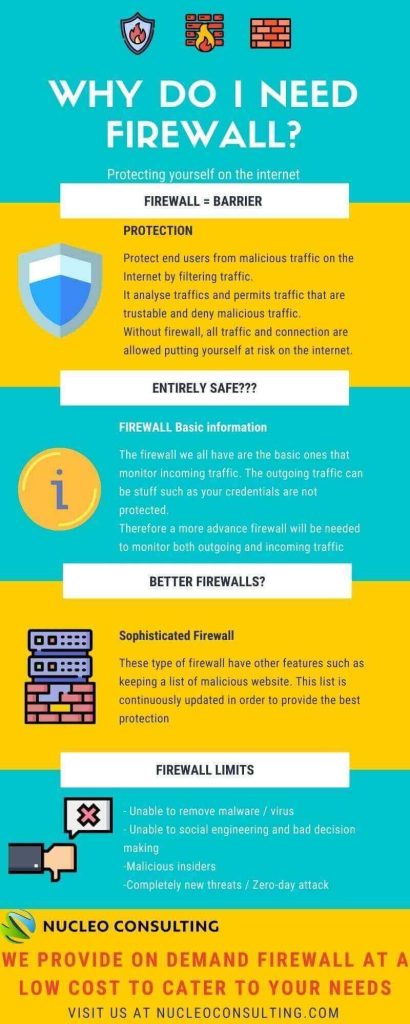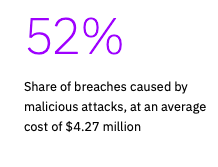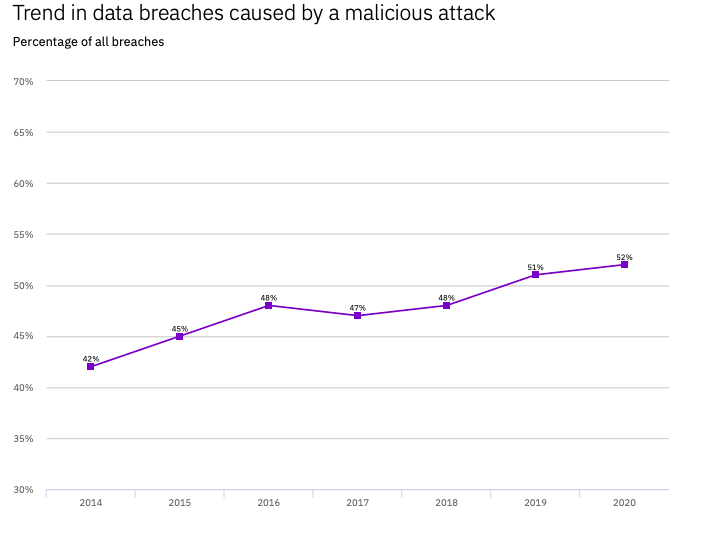The Lowdown on Firewalls
What is a Firewall?
It is a device that monitors and filters incoming and outgoing network traffic based on an organisation’s security policies. A firewall is the first line of defence in network security. They establish a barrier between secured and controlled internal networks that can be trusted and untrusted outside networks, such as the Internet.

WHY DO I NEED A FIREWALL?
1. Protects your computer from being attacked
Every Windows device has a simple packet-filtering firewall that protects you from hackers, viruses and worms. Without firewall, you will be a very easy target on the internet.
However, you should never depend on Windows’s built-in firewall as it isn’t enough – it only does basic simple filtering.
Sophisticated firewalls have better and improved features to further detect and block threats.
A good firewall will monitor traffic in both directions, both incoming and outgoing data, keeping your private information safe. It also prevents unauthorised access to your PC by making your PC undiscoverable when you are online. This helps to prevent attempted intrusions.
There are also features such as to view detailed reports about your network’s traffic which will help in troubleshooting.
Different type of firewalls
To maximise the use of firewall effectively, you need a software and hardware firewall. This is because the software firewall only filters based on port number and application, whereas the hardware firewall protects the secure internal organisation and the areas that are not secure such as the Internet.
The hardware firewall protects the internal network and the devices connected to the network. As some devices (e.g: telephone, printers) connected to the network do not have a software firewall, having a physical firewall will ensure that the devices are secured.
Why are both hardware and software firewall are needed?
The difference between hardware and software firewall is this: A hardware firewall protects you from the outside world, and a software firewall protects a specific device from other internal systems.

2. Increase in Attacks on SMEs
Over half of all cyberattacks today are targeted at small businesses because they typically have less network security, or assume that they do not require such systems as they are too small for hackers to target. Unfortunately, these SMEs are the easiest prey. 60% of small businesses do not manage to survive a cyberattack.. Cyberattacks can happen anywhere.
3. Increase in data breaches

Based on IBM reports, based on the years of findings the average cost of a data breach worldwide.
Malicious breaches have remained the costliest over the past five years.

The graph shows that breaches caused by malicious attacks increasing yearly.
There is a 10% from 2014 to 2020, representing a nearly 24% increase (growth rate) in the share of breaches caused by malicious attacks.
Every year, the number of data breaches reported increase. A firewall helps to reduce such malicious attacks.
Is a Firewall enough?
No. There are also other software and hardware used to further improve your security, for example, IDS (Intrusion Detection System) and IPS (Intrusion Prevention System). However, the firewall is your first line of defence and is still needed to protect your organisation.
Other ways of improving your security include sending your employees for training to prevent any insider attacks.

